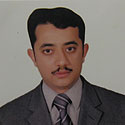Fermilab welcomes Bardeen fellow to SRF design team
 |
|
Mohamed Hassan, the 2010 John Bardeen Engineering Fellow Photo: Mohamed Hassan |
Mohamed Hassan loves electronic devices, a passion that makes the 2010 John Bardeen fellow an asset to the laboratory. Hassan was selected for the John Bardeen Engineering Fellowship last year and joined the Technical Division in December to research and develop superconducting radio frequency technology.
Hassan and his colleagues are using SRF technology to lay the groundwork for Project X, the proposed high-intensity proton accelerator project.
Engineering has always been an interest for Hassan, who loved playing with Erector Set toys as a child. As a university student at Ain Shams University in Cairo, Egypt, he developed a passion for studying electromagnetism, the force that causes interaction between electricity and charged particles.
“Electromagnetism is more than just a career for me,” Hassan said. “I find it very exciting to dig into its mathematics and to sense its physics.”
Hassan came to the US to work towards his Ph.D. in electrical engineering at the University of Tennessee. He became interested in particle accelerators in 2008 after attending a microwave linear accelerator course in the US particle accelerator school.
The Bardeen fellowship attracted Hassan because of its application process. Bardeen fellows are not initially assigned to a division, which allows them to fit their skills to an engineering field that inspires them.
Hassan’s love of electromagnetism and the opportunity to contribute to SRF and Project X technologies at a ground-floor level led Hassan to choose the SRF collaboration.
Mark Champion, who heads the SRF Development Department, said Hassan is a welcome addition. Hassan is helping to design accelerator cavities for Project X. One challenging issue with the design of these niobium cavities is their sensitivity to microphonics, mechanical vibrations of the SRF cavity that cause a change in the cavity’s resonant frequency. These frequency changes complicate the control of the electromagnetic fields within the cavity.
To address microphonics, the team has traditionally performed the electromagnetic and mechanical calculations of cavity design separately, drawing from both sets of calculations to arrive at a suitable design. Hassan is investigating the possibility of performing these calculations using a single code, which will significantly speed up the new cavity design process.
As Hassan settles in, the Bardeen Fellowship Committee continues its search for the next fellowship recipient. Applications may be submitted by Feb. 1. For more information, go to the Bardeen fellowship website.
-- Cynthia Horwitz
|